ASUS N53JF: Midrange 15.6” 1080p, Take Four
by Jarred Walton on December 28, 2010 1:40 AM ESTThe N53JF’s LCD: Not Up to Snuff
After going three-for-three on 1080p 15.6” LCDs being good quality, the ASUS notebook sadly ends our streak. Maximum brightness is just above 200nits, which isn’t too good if you’re trying to use it outdoors. The contrast is even worse, checking in at 233:1. We’ve seen plenty of laptops with even worse contrast ratios, but none of them were 1080p LCDs. Color accuracy is at least decent, and color gamut in some respects is better suited to general use than the high gamut displays. We’ve added the sRGB percentage of the Adobe 1998 color space to illustrate this point: 69% of ARGB is basically “ideal” for sRGB use, though in practice I still prefer slightly higher gamuts. Apple’s 77% is probably optimal for casual users.
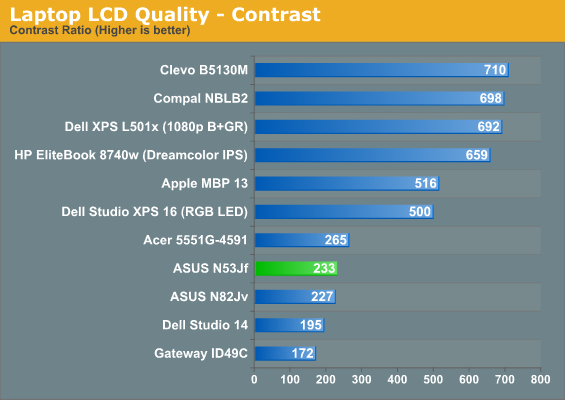
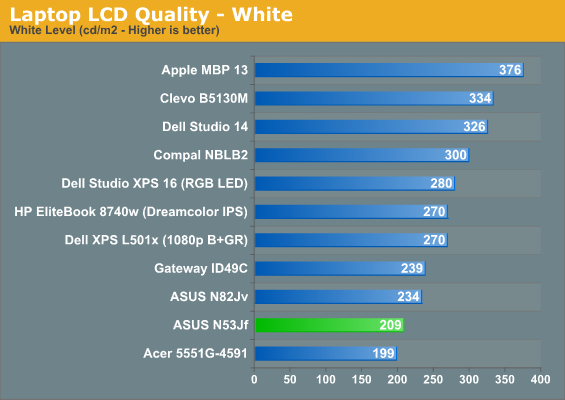
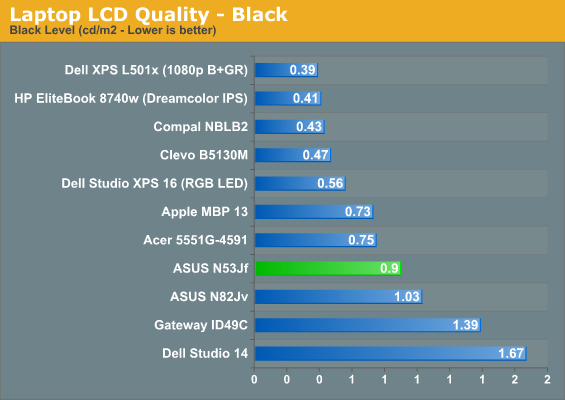
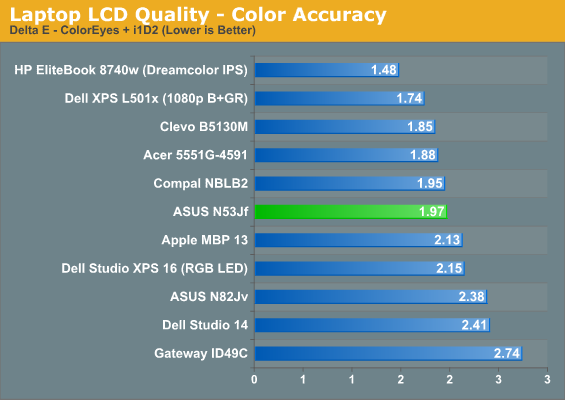
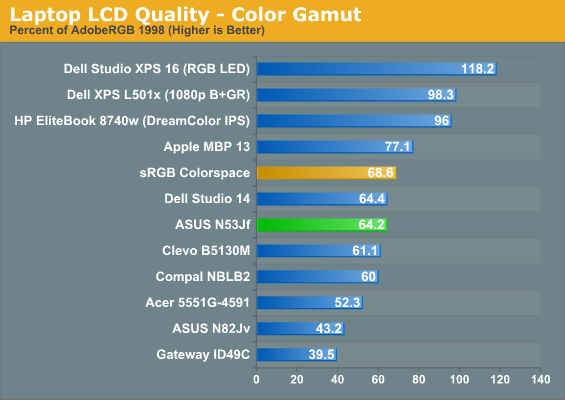
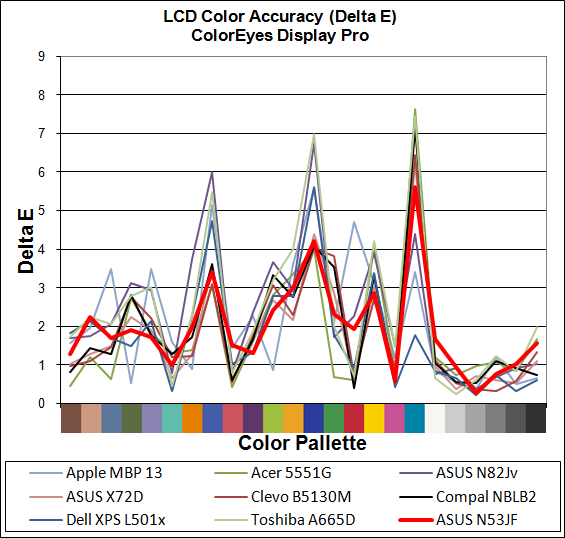
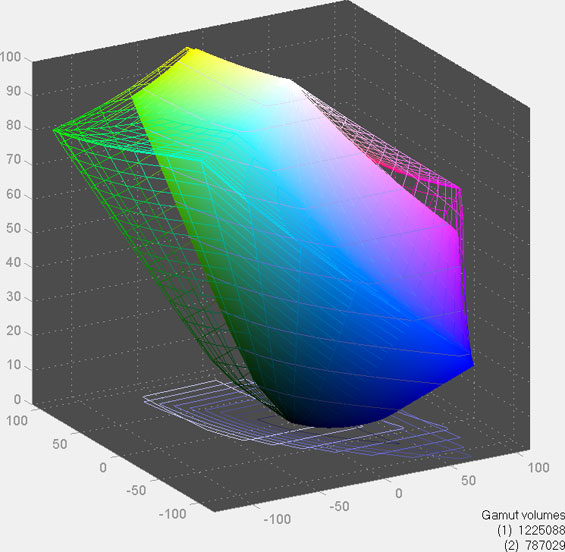
Viewing angles are standard TN panel fare, with severe color shifts from above and below. Nothing new to report here.
Heat and Noise Levels

Using our standard stress test of 3DMark06 looping (with some x264 encoding running in the background), final system temperatures hit 82C on the CPU and 67C on the GPU. (ACPI reports a temperature of 88C, but I’m not sure what that’s measuring or if it’s accurate.) Surface temperatures are also fine and are similar to the other midrange notebooks we’ve tested. Idle temps ranged from 25-28C on the palm rest and keyboard, while the bottom is slightly warmer at 25-31C. Under our stress test, the top surfaces hit 25-32C and the bottom 25-38C, with the hottest areas near on the exhaust on the left side. Noise levels are also decent, with idle noise near the 30dB floor of our test equipment and environment but coming in just above that with 31dB; load noise is particularly good, reaching a maximum of just 36dB (measured from 12” in front of the notebook).
















65 Comments
View All Comments
Luke2.0 - Friday, December 31, 2010 - link
Aww.... I see. I must have had false first impression when first getting in touch with Asus G51 specification, now that one feels real huge.Still, when you mentioned in the review this N53J being "heavier, wider, thicker, deeper than that one which in turn slightly larger than yet another one" I had some hopes LOL. (Not blaming you for this)
Thanks anyway.
Happy New Year 2011~~~
JarredWalton - Sunday, January 2, 2011 - link
I think the G51 is indeed heavier and larger than the N53; I was comparing the N53 to the Dell XPS 15. The G53JW in fact does support two hard drives, and it actually has some really interesting specs. When the Sandy Bridge refresh of that unit comes around, I'll be sure to hound ASUS about getting a review sample. We've looked at G73 twice, but no G53 yet.Luke2.0 - Monday, January 3, 2011 - link
Hi Jarred, I suppose you are busying yourself with new top-notch toy named Sandy Bridge.However, I stumbled upon this yesterday
http://forum.notebookreview.com/asus-reviews-owner...
Member "mzil" of the forum suspects the brightness level was not maxed during the test due to the reason he explained in there. Perhaps you could do a short check if this is so (and thus the display might be better than as recently reviewed)?
Let us know how things turn out, won't you? =)
Thank you.
(Gotta read the SNB review asap, thanks for this one as well)
manu12 - Wednesday, January 12, 2011 - link
there's something strange in your tests.For the Dell XPS15 laptop you specificy a
( 15.6" WLED Glossy 16:9 1080p (1920x1080) - AU Optronics B156HW1) screeh;
and you do the same for this Asus N53JF
(15.6" B+GR LED Glossy 16:9 1080p (1920x1080) - AU Optronics B156HW1)
and you have 'graphics benches' wich are completely differents , including big differences in contrast ?!
klunoee - Wednesday, May 4, 2011 - link
The only thing B&O is the amplifier for the speakers (B&O ICEpower technology). This means that the laptop has an efficient and powerful digital amplifier, but it tells you nothing about the quality of the speakers themselves or the audio codec delivering the sound to the amplifier.